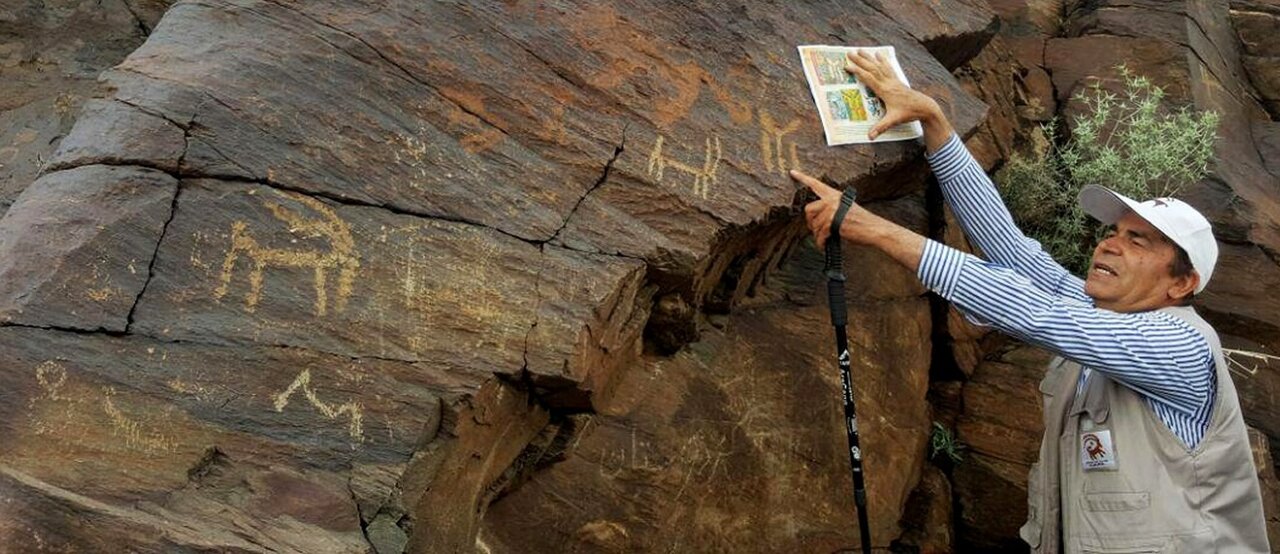Teymareh petroglyphs: a fascinating glimpse into remote past

TEHRAN - Among the earliest art forms in Iran are archaeological petroglyphs, pictographs, and rock reliefs that provide insights into ancient and primitive civilizations.
In Iran, the earliest known petroglyphs can be found in Teymareh where some of its petroglyphs date from 7,000 years ago. Moreover, the earliest known pictographs in Iran are in Yafteh cave (near Sorkheh Lizeh in Lorestan province) and date back 40,000 years. Archaeologists classify the tools for carving petroglyphs by their historical era. Incising tools include flint, metal, or thigh bones of hunted prey.
The Teymareh is situated at the intersection of the headwaters of the Anarbar River, between the cities of Mahallat, Khomein and Golpayegan. However, its mysterious rock paintings or petroglyphs can be found in three provinces of Markazi, Lorestan, and Isfahan.
This area boasts one of the wonders of tourism, the oldest examples of human engravings and early human habitation. In fact, its petroglyphs may help us observe the course of changes in human life thousands of years ago. The placement of these petroglyphs at 31 archaeological sites covering over 50 square kilometers has created an unparalleled museum in the heart of the region. Qeydu and Mazayen are the oldest remains of the petroglyphs at Teymareh.
The carved figures in Teymareh are sometimes abstract and sometimes real and include specific divisions such as animal and herb figures.
Animal figures such as goats (more than other motifs are present in these rocks, especially male goats with very large and pointed horns), feliformia, canidae, horses, dromedaries, owls, fish, tigers, cows, birds such as storks, hoopoes, and partridges. Herb figures such as cedar, pine, and tuft of wheat. Among them are images of martial arts, magic dance, pregnant women, camel caravans, and people with big hands.
In March 2020, a team of entomologists and archaeologists concluded that a previously found petroglyph depicts a six-limbed creature with the head and arms of a praying mantis. The rare 14-centimeter rock carving was first discovered during surveys between 2017 and 2018 at the Teymareh rock art site, but could not be identified due to its unusual shape.
International experts Jan Brouwer and Gus van Veen have examined the Teymareh site and estimated that their carvings date from 40,000 to 4,000 years ago. Prehistoric rock art offers glimpses of bygone eras and cultures, as archaeologists classify the tools used to carve them according to specific eras. Cutting tools include flint, metal, or femurs of hunted prey.
Iranian archaeologist Mohammad Nasserifard has proposed a bold hypothesis on a variety of petroglyphs that are scarred in the country, saying “Some prehistorical residents of the Iranian plateau migrated to the Americas.”His assumption is based on evidence from similarities between the petroglyphs and cave painting symbols in central Iran and the ones found in the Americas.
“After years of exploring ancient paintings inside Iran’s caves and mountains and other parts of the globe, amazing achievements have been made in this regard,” Nasserifard said.
“The ancient paintings of cave walls and mountains in Iran have been compared with ones in other parts of the world, their similarities in appearance and motifs have been amazing, according to quotes by professors Jan Brouwer and Gus van Veen,” Nasserifard explained, adding “His research and findings are presented to enthusiasts and researchers for the first time.”
“Appearance similarities, artistic styles, and uniform themes of ancient petroglyphs and cave paintings of this land (Iran) reveal many missing links in human history and arts one of which is the resemblance of ancient artifacts in Iran with ones found in the American continent.”
Visiting those petroglyphs may draw an idea that earlier people chose this way of communication to share their experiences and thoughts with later generations as these carvings contain some facts about livelihood, hunting, and lifestyle.
AFM
Leave a Comment